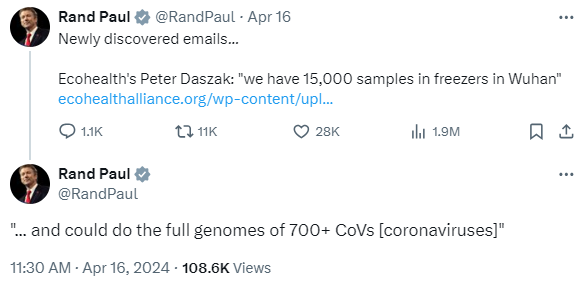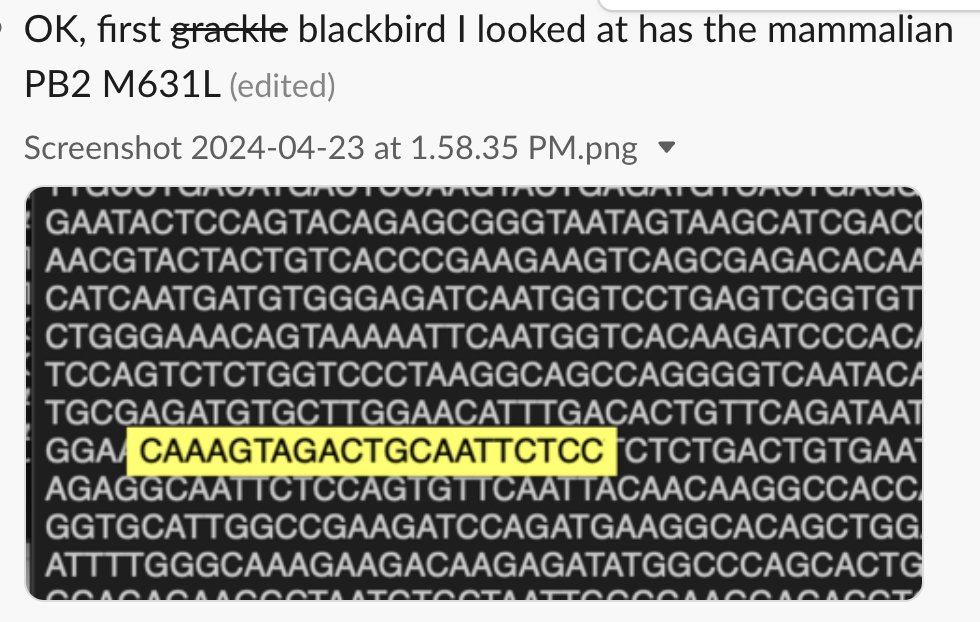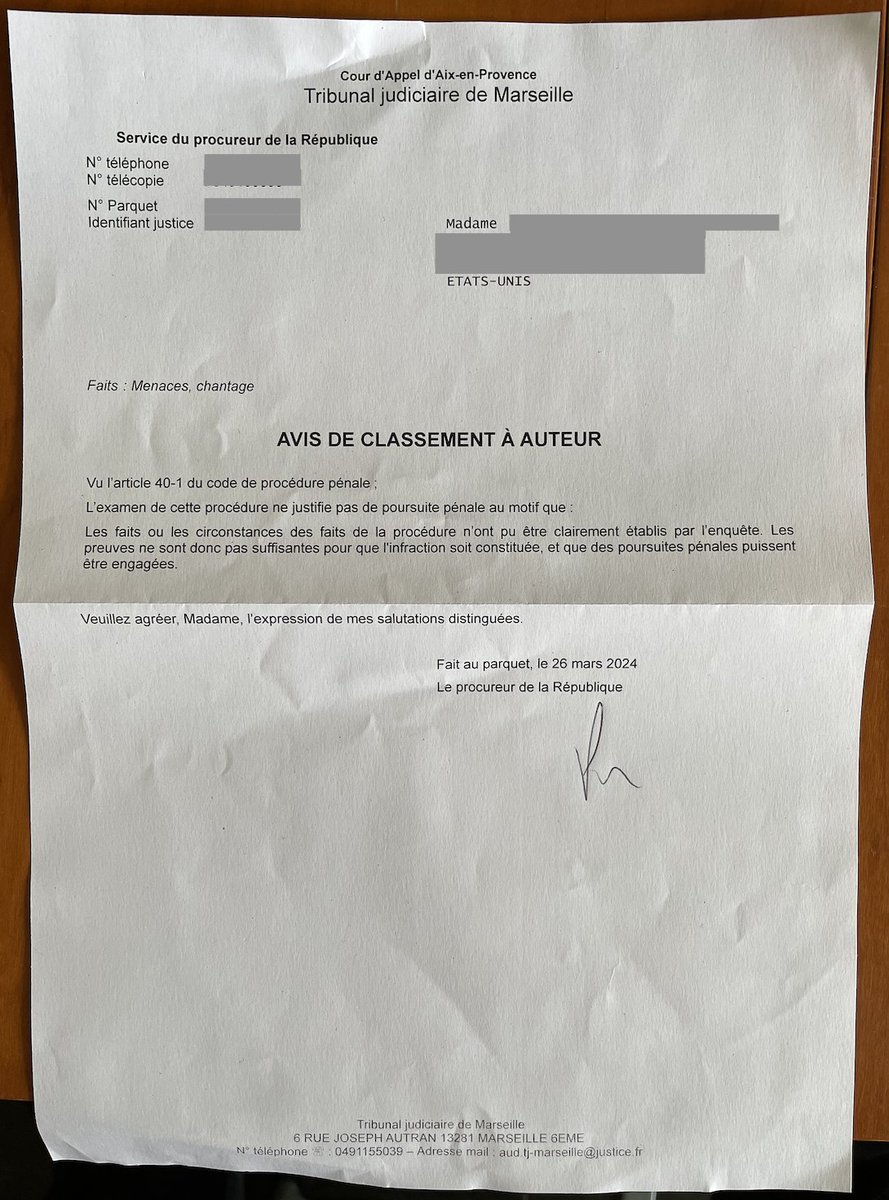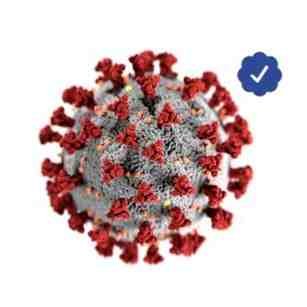Greg Tucker-Kellogg @gtuckerkellogg
Dad scientist. Biology prof in Singapore post biotech industry career. Musician on the side. Occasional tweets in Chinese. (he/him) @gtuckerkellogg.bsky.social Joined February 2008-
Tweets15K
-
Followers3K
-
Following2K
-
Likes25K
Truly excellent, informative thread for those willing to read it openly.
Truly excellent, informative thread for those willing to read it openly.
Fingers crossed! 🤞🏻
So much this.👇🏻
OK, I think we're close to decisive evidence that US bovine H5N1 had a single origin from birds, and that when related viruses from birds *have* been found, they are jumps from cattle back into birds. Grackles, blackbirds, chickens all show mammalian adaptation like PB2 M631L.
Also, for the record, Charlie Puth should not be a bigger artist. 4/
Bret isn’t a biologist. He’s a conspiracy theorist & anti vaxx podcaster who once studied biology. He has repeatedly demonstrated he doesn’t understand modern evolutionary principles, see his discussions of ‘lineage theory’. He just podcasted on how polio came from pesticides.
Bret isn’t a biologist. He’s a conspiracy theorist & anti vaxx podcaster who once studied biology. He has repeatedly demonstrated he doesn’t understand modern evolutionary principles, see his discussions of ‘lineage theory’. He just podcasted on how polio came from pesticides.
Interesting article in which it is likely that officials may well have visited Huanan on Dec 25th 2019, the results of which were never disclosed to WHO. All we know is that relevant live species that were on sale in early Dec were gone by Jan 1 2020 apnews.com/article/china-…
The saddest image out of Gaza I have seen - in her final moments, this little girl still holds on to her candy. Photographer Jehan Kawera describes the child “gasping for breath, and the piece of candy, still stuck in her hand stained with blood.” From @democracynow
Maybe. Maybe not. But what @thackerpd, in his desperation to dodge the point that the definition of physician he uses (having a license to practice) to portray @AliNeitzelMDas a “fake physician” still *also* applies to @DrJBhattacharya.
@gtuckerkellogg @flodebarre @Ayjchan The RaTG13 paper was submitted 20 Jan 2020. So they were working on during Wang Linfa's visit. How could junior lab members work on that, which implicitly suggests they'd nothing closer than RaTG13 (96%), without knowing if that was so or if it was secretly their 2nd closest?
Among the four horsemen of new atheism, Dennett was, IMO, the only one whose writing could actually reach religious people. washingtonpost.com/obituaries/202…
This claim by Twitter is absolute garbage. Here’s why: x.com/KHayhoe/status… As @MaibachEd explains, even presenting climate change as a “he said/she said” debate is a denial argument. x.com/maibached/stat…
This claim by Twitter is absolute garbage. Here’s why: x.com/KHayhoe/status… As @MaibachEd explains, even presenting climate change as a “he said/she said” debate is a denial argument. x.com/maibached/stat… https://t.co/W9a54Qn9oU
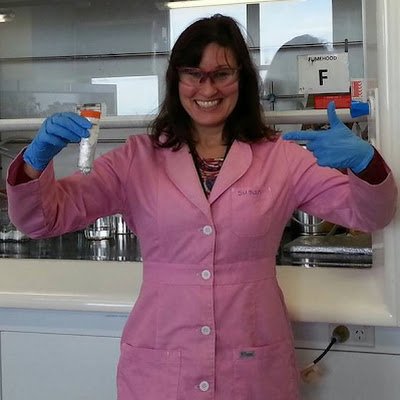
Dr Susan Oliver (PhD) @DrSusanOliver1
15K Followers 2K Following Scientist who is passionate about correcting misinformation
Debunk the Funk @Debunk_the_Funk
33K Followers 850 Following 👋🏾 I’m Dan, I’m a Ph.D. in molecular biology that covers bad science while making good science accessible.
Health Nerd @GidMK
81K Followers 2K Following https://t.co/hkLzdpoOQd Epidemiologist. Writer (Slate, TIME, etc). ' Research fellow at @UoW Host of @senscipod Email [email protected] he/him
David Gorski, MD, PhD @gorskon
78K Followers 2K Following Surgeon/scientist promoting science-based medicine. Editor, Science-Based Medicine blog. (He/him.) Also at https://t.co/2LecwK3CP9.
David Noble 🏴�.. @DavidPNoble63
28K Followers 16K Following Microbiologist & molecular geneticist. EU citizen. Welsh rugby fan. Swansea City fan. All views my own and do not reflect those of my employer🗿
The Real Truther @thereal_truther
49K Followers 6K Following Host of The Real Truther Show on X Spaces! President of the RTN Network.™ Spreading truth about vaccines since 2015.
Swaledale Mutton Co. @SwaledaleMutton
12K Followers 6K Following The Swaledale Mutton company, a small family business. We supply top quality prime mutton direct, and also run Sheep Keeping courses for smallholders!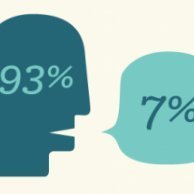
bad_stats 🕜💵�.. @thebadstats
35K Followers 339 Following making IDW content accessible to those with average IQs and below
Jonathan Laxton MD, F.. @dr_jon_l
8K Followers 781 Following 🇨🇦 Internal Medicine physician and asst. professor of medicine 🏳️🌈. My views are my own. Star Wars 🤓. He/Him.
Dr. Angela Rasmussen @angie_rasmussen
454K Followers 8K Following Virologist. PI @VIDOInterVac. Adj Prof @USask BMI. P2 @covarr_net. Jeopardy! loser. Famed for my obnoxious turns of phrase. 🇺🇸in🇨🇦. she/her
Edward Nirenberg 🇺.. @ENirenberg
36K Followers 6K Following Views my own, but you can borrow them if you feel so inclined. Anti-disease. Big Nerd Energy. “A homework person.” Fun at parties. Antibody hoarder. he/him
Prof Gavin Yamey @gav.. @GYamey
41K Followers 8K Following Professor of Global Health & Public Policy @DukeU. Director, Center for Policy Impact in Global Health. DJ @wxdu. TIME columnist. He/him. Tallest Jew on Earth.
Dr. Deepti Gurdasani @dgurdasani1
143K Followers 6K Following Clinical epidemiology, machine learning, NLP, global health. Intersectional feminist. she/her. Also on @[email protected] @dgurdasani1.bsky.social
PaedsHaemDoc 🗿 @dr_barrett
6K Followers 1K Following Consultant Paediatric Haematologist views are MINE ONLY - RT not endorsements. Dad to 3 daughters. ENFP
Alastair McAlpine, MD @AlastairMcA30
41K Followers 2K Following Paeds infectious diseases MD. Author. Prescription: Ice Cream out now! https://t.co/lA4HQOrRdY
Stuart Neil @stuartjdneil
16K Followers 1K Following Virologist. 🦠 HIV, EBOV, SARS2 and Flu interactions with their hosts. ‘Biodefense expert’ according to a hack
Chris Kavanagh @C_Kavanagh
22K Followers 1K Following Cognitive Anthropologist/Social Psychologist. Norn Irish in Japan. Host of @GurusPod. Interested in conspiracism, radicalization, & religion/ritual psychology.
James Neill ≠ �.. @jneill
13K Followers 7K Following 77th? 'That guy is impossible! Avoid.' : NBernard BTC (jks, or...) 1KFkyqUL9AmaVXu9SxjQ5PtKPJrryZzQEp @jneill.bsky.social
SharkyDX P.M.D🦈�.. @Sharky_vs_Evil
4K Followers 5K Following #ANTIVAXXERS CAN SUCK IT. No one has #DiedSuddenly of the covid vaccines sorry thats just a #fact, #TeamReality over #conspiracy Pi Mu Delta. FOLLOW THE SHARKS
cat von don't 🐦.. @CatVonDont
6K Followers 6K Following Leader of the 77th biscuit battalion. Here to intercept your tweets because you are a credible threat to the narrative
Celine Sonkens @CelineSonk12215
37 Followers 5K Following
Maggie Roggeman @MaggieRogg65877
88 Followers 5K Following
Dasha @Dasha1374022
10 Followers 955 Following
Carly @carlyknowsbest
96 Followers 426 Following Public health advice isn't coercion. When you have empathy... learn from it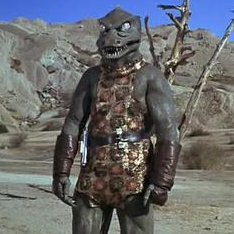
Bemused medic @NicotineLozeng
2K Followers 2K Following Retired physician Vaccines save lives Butler & valet to two rescue cats radiofrance FIP addict Biscuit nibbler Employee of the month
Mia-rose Ettison @EttisonMia54228
66 Followers 5K Following
Cow Rider @c0wrider
117 Followers 383 Following Not Left. Not Right. Not Centre. My real name. #teamfollowback
willow @willow188663
28 Followers 2K Following
Lena Deloatch @l_deloa
69 Followers 5K Following
Stanislav Mihulka �.. @MihulkaS
2K Followers 990 Following Editor-in-chief https://t.co/Bqg1B98lGs, https://t.co/BrtYiobFSn, @JihoceskaUni. Science communication on high wire. Evolutionary biologist. Techno-optimist. 🚀
Chris Birdsey @ChrisBirdsey
6 Followers 9 Following
PeachyPetal @petal_peac30839
4 Followers 987 Following
Valentina Lacewell @ValentinaL11415
64 Followers 5K Following
Sarah Jarozs @sarahjarozs_
1 Followers 668 Following
Vikki Sequeira @SequeiraVi8009
95 Followers 5K Following
Chunlei Jiao @Chunlei_Jiao
231 Followers 206 Following Incoming assistant professor in NUS; PhD & Postdoc @BeiselLab, @HIRI; Interested in discovering and engineering CRISPR and novel defense systems.
Crystal Warren @WarrenCrys9441
98 Followers 3K Following
Teight @Teight56558
0 Followers 494 Following
Oakley Mckinny @OMckinny52057
49 Followers 5K Following
Max @maxt2047
128 Followers 1K Following
ku_mar458 @KMar45878137
17 Followers 882 Following
Bridget Arruda @ArruBridg
73 Followers 5K Following
Christiaan Faul @ChristiaanPtr
209 Followers 430 Following He/him. PhD Candidate @UnionSeminary in Hebrew Bible. @lptsNow alum. Interested in identity construction and cultural trauma in exilic texts. Views my own.
Tom Brown 🇺🇸�.. @browntom1234
2K Followers 5K Following Same username, profile pic and handle on 🧵s. Gray whale cow/calf. 4/30/2021. https://t.co/6k045IbtX6
Diego Bassani, PhD @DGBassani
62K Followers 7K Following Senior Scientist/Epidemiologist. Not here anymore. @dgbassani.bsky.social
Boshen Yan @Boshen_Y
2 Followers 19 Following
Misti Mcmurry @MiMcmur
78 Followers 5K Following
Kathi Mcdonough @McdonoughK73756
70 Followers 5K Following
Rosa Santistevan @santisteva_ro
54 Followers 5K Following
Avril Clynes @avr_clyn
57 Followers 5K Following
Tari Romera @ta_romera
39 Followers 5K Following
Vivan Mendiaz @VMendiaz93217
82 Followers 5K Following
Kasliez @kasliez56174
178 Followers 3K Following
Rosemarie Takeuchi @TakeuRosema
63 Followers 5K Following
Eliana Mooers @EliaMooers
87 Followers 5K Following
Arnita Gundelach @arn_gundel
42 Followers 5K Following
Danuta Bushy @bus_danu
62 Followers 5K Following
Sasha Gusev @SashaGusevPosts
9K Followers 3K Following Statistical geneticist. Associate Prof at @DanaFarber | @harvardmed | @DFCIPopSci
Nora Lacz @NLacz76137
68 Followers 5K Following
Dr Susan Oliver (PhD) @DrSusanOliver1
15K Followers 2K Following Scientist who is passionate about correcting misinformation
Debunk the Funk @Debunk_the_Funk
33K Followers 850 Following 👋🏾 I’m Dan, I’m a Ph.D. in molecular biology that covers bad science while making good science accessible.
Health Nerd @GidMK
81K Followers 2K Following https://t.co/hkLzdpoOQd Epidemiologist. Writer (Slate, TIME, etc). ' Research fellow at @UoW Host of @senscipod Email [email protected] he/him
David Gorski, MD, PhD @gorskon
78K Followers 2K Following Surgeon/scientist promoting science-based medicine. Editor, Science-Based Medicine blog. (He/him.) Also at https://t.co/2LecwK3CP9.
David Noble 🏴�.. @DavidPNoble63
28K Followers 16K Following Microbiologist & molecular geneticist. EU citizen. Welsh rugby fan. Swansea City fan. All views my own and do not reflect those of my employer🗿
The Real Truther @thereal_truther
49K Followers 6K Following Host of The Real Truther Show on X Spaces! President of the RTN Network.™ Spreading truth about vaccines since 2015.
bad_stats 🕜💵�.. @thebadstats
35K Followers 339 Following making IDW content accessible to those with average IQs and below
Jonathan Laxton MD, F.. @dr_jon_l
8K Followers 781 Following 🇨🇦 Internal Medicine physician and asst. professor of medicine 🏳️🌈. My views are my own. Star Wars 🤓. He/Him.
Dr. Angela Rasmussen @angie_rasmussen
454K Followers 8K Following Virologist. PI @VIDOInterVac. Adj Prof @USask BMI. P2 @covarr_net. Jeopardy! loser. Famed for my obnoxious turns of phrase. 🇺🇸in🇨🇦. she/her
Edward Nirenberg 🇺.. @ENirenberg
36K Followers 6K Following Views my own, but you can borrow them if you feel so inclined. Anti-disease. Big Nerd Energy. “A homework person.” Fun at parties. Antibody hoarder. he/him
Prof Gavin Yamey @gav.. @GYamey
41K Followers 8K Following Professor of Global Health & Public Policy @DukeU. Director, Center for Policy Impact in Global Health. DJ @wxdu. TIME columnist. He/him. Tallest Jew on Earth.
Dr. Deepti Gurdasani @dgurdasani1
143K Followers 6K Following Clinical epidemiology, machine learning, NLP, global health. Intersectional feminist. she/her. Also on @[email protected] @dgurdasani1.bsky.social
PaedsHaemDoc 🗿 @dr_barrett
6K Followers 1K Following Consultant Paediatric Haematologist views are MINE ONLY - RT not endorsements. Dad to 3 daughters. ENFP
Alastair McAlpine, MD @AlastairMcA30
41K Followers 2K Following Paeds infectious diseases MD. Author. Prescription: Ice Cream out now! https://t.co/lA4HQOrRdY
Stuart Neil @stuartjdneil
16K Followers 1K Following Virologist. 🦠 HIV, EBOV, SARS2 and Flu interactions with their hosts. ‘Biodefense expert’ according to a hack
Brent Lee @BrentLeeSDCIC
24K Followers 7K Following ''That ex conspiracy theorist tosser'' Likes long walks down the grassy knoll, spelunking rabbit holes & chasing chemtrails. Host: @somedarepodcast & MSM shill.
Chris Kavanagh @C_Kavanagh
22K Followers 1K Following Cognitive Anthropologist/Social Psychologist. Norn Irish in Japan. Host of @GurusPod. Interested in conspiracism, radicalization, & religion/ritual psychology.
John Bye @_johnbye
7K Followers 837 Following
James Neill ≠ �.. @jneill
13K Followers 7K Following 77th? 'That guy is impossible! Avoid.' : NBernard BTC (jks, or...) 1KFkyqUL9AmaVXu9SxjQ5PtKPJrryZzQEp @jneill.bsky.social
Ivor Mectin 🇺🇦�.. @IvorMectin1
3K Followers 758 Following COVID-19: Ultimate Misinformation Multiple Dead Dewormed Horses Edition OUT NOW!! DOUBLE THE LENGTH!! Link: https://t.co/hVRSAkICzA
Martin R. @martin_rohbeck
386 Followers 854 Following PhD Student Causality & ML @StatGenomics w/ @OliverStegle @BrittaVelten - combining 💻 & 🧬 | Previously @quantcotech | Runner Big & Little Brother
Chunlei Jiao @Chunlei_Jiao
231 Followers 206 Following Incoming assistant professor in NUS; PhD & Postdoc @BeiselLab, @HIRI; Interested in discovering and engineering CRISPR and novel defense systems.
Tom Ellis @ProfTomEllis
23K Followers 602 Following Synthetic Biology & Synthetic Genomics @ Imperial College London and the Sanger Institute. Bilingual in English and DNA. Also at https://t.co/f2Na2PES8R
Olivier Borkowski @O_Borkowski
6K Followers 2K Following Tenured Scientist in Synthetic Biology (Paris Area) Cell-Free ⦁ SynBio ⦁ Bioengineering ⦁ Microbiology @INRAE_Micalis & @UnivParisSaclay
Peter A. Carr @PeterACarr
2K Followers 674 Following Synthetic biology, iGEM, parenting, weird nature, comedy. Soft spot for cephalopods. RT means interest, maybe agreement.
Nicola J Patron 👩�.. @nicolabiologist
3K Followers 2K Following 🌼 Botanical engineer ⚙️ • 👩🏽🔬PhD • ✊🏿 Melanated 🇹🇹 • #PlantSci • #OpenScience • #SynBio • #EngBio •
Nabiha Saklayen @nabsicle
3K Followers 2K Following your cells, your cure. CEO + Co-Founder @CellinoBio. @ToryBurchFdn Fellow @igisci. co-creator @iamastem. physics PhD @HarvardUniv. views my own.
Synlogic @synlogic_tx
3K Followers 524 Following Synlogic is a clinical-stage biotech company advancing novel, oral, non-systemically absorbed biotherapeutics to transform the care of serious diseases.
Nathan Hillson @NathanHillson
2K Followers 314 Following Synthetic Biology Informatics, Co-Founder, Bioeconomy enabler; views are my own and do not represent any institution; (he/him/his)
Emily Leproust @EmilyLeproust
14K Followers 303 Following Entrepreneur & CEO @TwistBioscience. Fascinated by #synbio and #genetics
Rust for Bioinformati.. @rust4bio
2K Followers 3 Following The home of the awesome Rust for Bioinformatics community. We are disrupting the status quo! And we love #Bioinformatics and #rustlang 🦀🧬💻❤
Guy Van den Broeck @guyvdb
4K Followers 2K Following Associate Professor and Samueli Fellow at UCLA @UCLAComSci; Scientist at @RelationalAI; working on Artificial Intelligence
Bob Morris, MD, PhD @rdmorris
3K Followers 899 Following Physician, epidemiologist, environmental engineer, award-winning author of The Blue Death . Taught at Tufts and Medical College of WI 🇺🇦
Olayemi Olurin @msolurin
162K Followers 4K Following 🇧🇸🇳🇬Movement Lawyer + Political Commentator. subscribe to Olurinatti on YouTube and substack
Sasha Gusev @SashaGusevPosts
9K Followers 3K Following Statistical geneticist. Associate Prof at @DanaFarber | @harvardmed | @DFCIPopSci
Liam Bright @lastpositivist
64K Followers 5K Following Aspiring philosopher; tolerable human; "amusing combination of sardonic detachment & literally all the feelings felt entirely unironically all at once" [he/his]
Andrea C. Love, Ph.D... @dr_andrealove
3K Followers 1K Following Immunologist and Microbiologist | Founder, ImmunoLogic | Exec Director, American Lyme Disease Foundation | SciComm | Activist | Cat mom | Runner
Lev Parnas @levparnas
96K Followers 948 Following The Real Lev Parnas, Opinions are my own, Post-Cult of Trump. #LevRemembers
Travis Allen @TravisAllen02
252K Followers 87K Following cyber hooligan. information security engineer. bourbon enjoyer 🥃. vanderbilt grad. mavericks fan
Luka Cicin-Sain (cici.. @CicinSain_Lab
653 Followers 101 Following Viral Immunologist, science enthusiast. Lab focuses on adaptive immunity against CMV and SARS-CoV-2. My views are my own, not necessarily of my employer.
Jennifer Nuzzo, DrPH @JenniferNuzzo
50K Followers 2K Following Epidemiology and global health security policy. https://t.co/47uXVOSCLj… Speaking requests: https://t.co/mflNldsXnL
The Veg Doc (She/Her).. @thevegdoc
4K Followers 457 Following Board certified Pulm, CCM, & LM. Vegan for animals. (Opinions my own≠medical advice). Raisins ruin everything. Been told I’m “vegan (so terrible at medicine).”
Adam MacLean @adamlma.. @adamlmaclean
2K Followers 995 Following Assistant professor @USC. Modeling cell fate with dynamical systems & statistical inference. What makes a stem cell? he/him. bsky: @adamlmaclean.xyz
Gupta Lab @GuptaR_lab
25K Followers 375 Following Ravi Gupta is Professor of Clinical Microbiology, University of Cambridge. TIME100 Most Influential 2020; Clarivate Highly Cited Researcher 2022/23 global lists
Whores of Yore @WhoresofYore
671K Followers 8K Following Sex History. "A Catalogue of Jilts, Cracks, Nightwalkers, Whores, She-Friends, Kind Women & Others of the Linen-Lifting Tribe”
caroline wheeler @cazjwheeler
22K Followers 2K Following Political Editor of The Sunday Times. News addict, author, wife, mum of three. Views are mine and not those of my employer. [email protected]
Sabina Vohra-Miller @SabiVM
27K Followers 3K Following Doctor of Public Health student | MSc Pharmacology/Toxicology | Vohra Miller Foundation | Unambiguous Science | First Exposure | South Asian Health Network
NTI @NTI_WMD
22K Followers 1K Following We’re transforming global security by driving systemic solutions to nuclear and biological threats imperiling humanity.
Mt. St. Helens @MtStHelensWA
116K Followers 0 Following I’m here to explain myself. #parody Team Mt. St. Helen’s store ⬇️
🔬 ))ay( 🚴 @jjcouey
14K Followers 611 Following {neuro}biologist-naturalist | patch clamp jedi master, ret. | papa | fotograf | kite pilot | https://t.co/CWvfmCo9vA | https://t.co/OTRJ2C72Vt | #ogDRASTIC
Biosafety Now! @BiosafetyNow
5K Followers 117 Following US-based NGO working for a future where scientific research on pathogens supports human life without also threatening it & public trust in science is restored.
Patrick Hsu @pdhsu
30K Followers 3K Following co-founder @ArcInstitute, @BerkeleyBioE professor | researcher & investor in genome editing, biotech, AI | 🇨🇦 @harvard @broadinstitute @editasmed, Fast Grants
David Melnikoff @DEMelnikoff
1K Followers 444 Following Assistant Professor of Organizational Behavior at Stanford GSB.
Office for National S.. @ONS
355K Followers 997 Following The UK's largest independent producer of official statistics and the recognised national statistical institute of the UK. Contact https://t.co/FZIZy3JtgU
Erik Svensson @EvolOdonata
7K Followers 5K Following Evolutionary biologist, photographer & professor. @[email protected] https://t.co/HoEI1f2x7A https://t.co/FLWu84vyLh
Jonathan Pritchard @jkpritch
15K Followers 358 Following My lab at Stanford studies human population genetics and complex traits.
Rick @_RickF__
66 Followers 939 Following 'The first principle is that you must not fool yourself and you are the easiest person to fool.'
Timothy @tim_stasevich
1K Followers 637 Following
Decoding Fox News @DecodingFoxNews
137K Followers 3K Following Deciphering misinformation and disinformation on Fox @JulietJeske #🟦 Newsletter/Podcast at Substack https://t.co/Mq9d1iEhCL https://t.co/MtZotYLrQG
Sally Beck @Beck_Sall
15K Followers 4K Following rogue legacy media journalist | vaccine injury whistleblower | owning google's description of me! | they forgot bestselling author | https://t.co/nd0Uw9I4kb
Peter Miller @tgof137
1K Followers 238 Following
AMH Band @AMHband
27K Followers 84 Following
Taylor Swift @taylorswift13
95.4M Followers 0 Following All’s fair in love and poetry... New album THE TORTURED POETS DEPARTMENT. Out now 🤍
ICE must be destroyed.. @Itmechr3
26K Followers 2K Following Host of @HappenHerePod (and sometime @bastardspod) for @coolzonemedia @iheartpodunion member Ending every tweet with Moreover, ICE must be destroyed She/HerYay! Three years after @raoult_didier @Pr_Chabriere_E and @IHU_Marseille filed a complaint against me for harassment and blackmail, the Marseille Procureur tells me today they could not find any grounds for criminal prosecution.
Anyway, I'm only telling this story because it's the funniest possible thing to happen after that year. Therapy is great, and if you go through it, you should take notes because you may forget some of the exercises they teach you.
Neither neo-Darwinism nor speciation theory are "badly broken". Weinstein has been banging this drum for 5 years and has not produced any evidence in his search for attention and clicks. See my earlier posts on his dubious claims: bit.ly/49SVfiO bit.ly/44hqDGC
@martyrmade Speciation theory is badly broken. But as with the rest of evolutionary theory, the solution is higher quality Darwinism. Only when that mess is fixed will we know what remains to be explained. My bet would be the remainder (what can not be explained in principle by Darwinian…
Doesn’t seem like too much of an ask to be able to scroll through replies without seeing actual porn
@twitscotty @JeremiahDJohns @dieworkwear Thank you! Well my daughter has impeccable taste.
@allanwhite @JeremiahDJohns @dieworkwear looks great
@JeremiahDJohns @dieworkwear Accurate. My daughter got me this amazing — but suuuper oversized — Irish wool sweater. I was about to return it when @dieworkwear baggy sweaterpilled me so I wore it like a good dad.
An utterly deranged but possibly true statement: @dieworkwear might be single-handedly changing the trajectory of men's fashion in the western world. One single guy who spent too much time on menswear forums.
Completely missed that a new version of bwa 0.7.18 was released last week (now supports ARM and that compiler issue that's been there for a while). First release in >6 years. github.com/lh3/bwa/releas…
@paulg Not so sure I agree. Sometimes it means you don’t have to “be right” in that particular moment. For example, when someone needs empathy, reading the room can sometimes mean not trying to use logic to make them feel better.
@paulg I always understood "read the room" as something like: "figure out if this is the right context and the right audience for this conversation or not and adapt". I mean, some contexts are better for some discussions than others and we need to "read" people to communicate well.
Holy shit. A spokesperson for Ted Cruz’s super PAC just admitted that they *own* his podcast, Verdict with Ted Cruz, that Ted hosts three times per week. HOW IS THIS NOT COORDINATING WITH A SUPER PAC?!?
Just for the record, I absolutely stand by this "joke" and am not ashamed at the slightest.
Bruker Wins Nanostring Auction omicsomics.blogspot.com/2024/04/bruker…
Shocking!
John Campbell recently got very excited about a paper claiming to show that cancer deaths increased in Japan following vaccination. A closer look at the data shows that the paper is bollocks. youtu.be/rCVmCZMMSto
Does anyone else think its completely weird how many academic docs jumped out of their specialty to pursue research in completely orthogonal fields solely because it was “COVID”
@EricJud08062039 I was hoping it would pierce my eyeballs
This is our dog, Mukti. She is the sweetest being on earth although she accidentally ate the couch. Also, two pairs of Birkenstocks. She is doing much better, except with pens, possibly wanting to try her paw at writing. Being away from her is intolerable. Send dog pictures.

